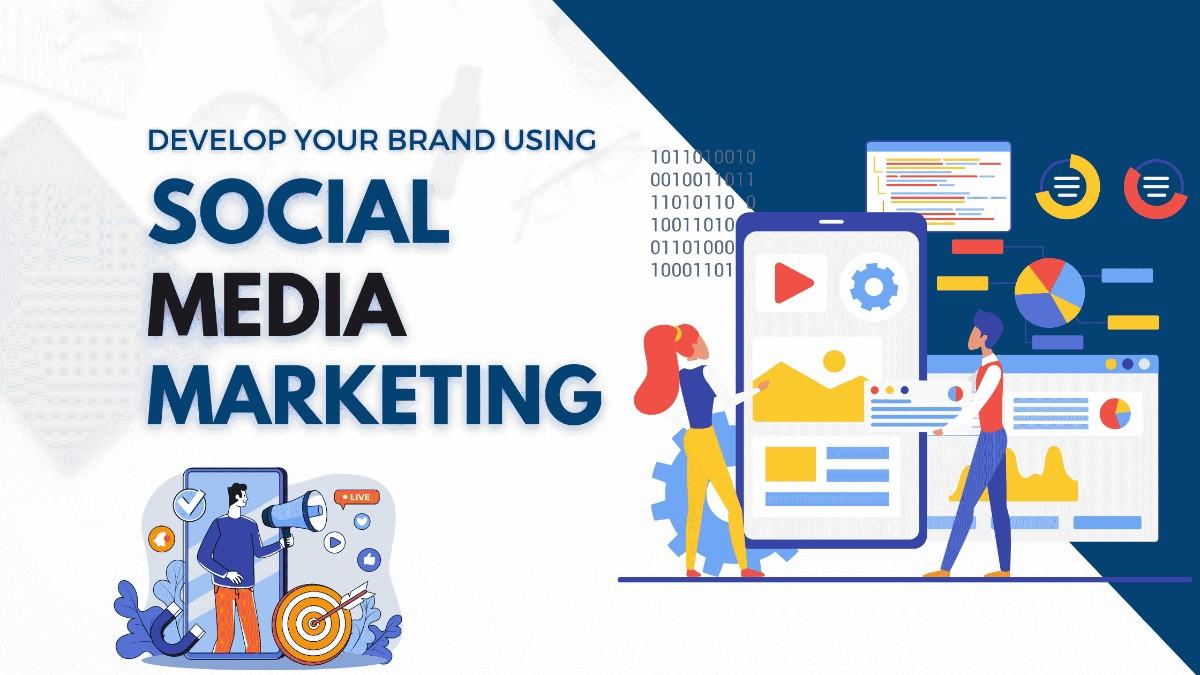
Develop Your Brand Using Social Media Marketing
Introduction
Social media marketing (SMM) is a powerful tool for businesses to reach their target audience because most of the people using social media are using it for entertainment, and some businesspeople are using social media to develop their brand awareness, mostly using it for small business owners. Here’s a step-by-step guide on how to effectively use social media marketing for your business.
Understanding Your Audience
Why Audience Insight is Essential
Demographics:elements like age, gender, location, and interests are key to shaping your messaging and making sure it aligns along with your audience’s options.
Behavioral Insights: studying how your audience interacts with various platforms helps you create content that suits their behavior and maximizes impact.
Strategies for Audience Research
Surveys and Polls: utilize tools like Google Forms or Typeform to gather insights about your target audience’s options.
Social Media Insights: Platforms like Facebook and Instagram offer analytics about your followers, revealing engagement traits and peak interest times.
Competitor Analysis: look into what successful brands to your area of interest are doing on social media to glean insights into audience possibilities.
Crafting a Cohesive Brand Identity
Elements of Brand Identity
Your brand identity is how your audience perceives you. Each submit, remark, and shared picture helps shape this perception. Right here are the essential factors to take into account
Brand Voice: determined on a regular tone—friendly, authoritative, humorous, etc.
Visual Identity: steady use of colors, logos, and fonts across all platforms to strengthen reputation.
Messaging: clean and regular messaging that displays your logo’s values and task.
Tips for Building Brand Identity on Social Media
Profile Consistency: make sure your profile photo, bio, and links are uniform across all platforms.
Share Brand Stories: Use storytelling to connect emotionally with your audience, making your emblem relatable. For instance, sharing the back-of-the-scenes content material or client testimonials can humanize your brand.

Creating Engaging Content
Types of Engaging Content
Engagement is prime on social media marketing. The more your target audience interacts together with your content, the greater visibility you gain.
Interactive Posts: quizzes, polls, and demanding situations encourage engagement and participation.
User-Generated Content: Encourage followers to share their experiences with your product, showcasing their voices.
Educational Content: create how-tos, tips, or informative posts that add value on your audience’s lives.
Best Practices for Content Creation
Quality Over Quantity: it is better to post less often but ensure each piece of content is excessive best than to flood your feed with mediocre posts.
Utilize Hashtags Wisely: In social media marketing, relevant hashtags will expand your attain however keep away from overloading your posts with them. A few focused hashtags may be extra effective.
Visual Appeal: invest time in crafting visually appealing images or movies. Posts with compelling visuals acquire higher engagement charges.
Effective Engagement Strategies
Building Community
Engagement isn’t just about likes and stocks; it’s about cultivating relationships along with your target market
Responding to Comments: Make time to reply to comments on your posts. This shows you care about your audience’s opinions.
Joining Conversations: Participate in trending conversations or topics relevant to your brand. It demonstrates your brand’s relevance and interest in current events.
Hosting Live Sessions
Consider hosting live Q&As or webinars. This not only gives your audience valuable content but also fosters a sense of community.
“Live sessions lend authenticity to your brand and allow real-time interaction, making your audience feel valued.”
Leveraging Analytics
Understanding Metrics
As you put into effect your social media marketing techniques, reading performance metrics is important. Key metrics to consider include:
Engagement Rate: likes, stocks, and remarks suggest how properly your content resonates.
Reach and Impressions: These metrics help you understand how many human beings see your content.
Conversion Tracking: Measure what number of social media interactions result in preferred moves, such as purchases or sign-ups.
Tools for Tracking Performance
Google Analytics: screen traffic coming out of your social media channels to your website.
Social Media Platforms’ Analytics: analytics: use built-in equipment from structures like Facebook, Instagram, or Twitter to tune overall performance metrics.
Conclusion
Developing your brand through social media marketing is no small feat, but with the right strategies in place, it can lead to tremendous growth and engagement. You can build a robust and recognizable brand presence online by understanding your audience, crafting a cohesive brand identity, creating engaging content, actively engaging with your community, and leveraging analytics to have a reach in business through social media marketing.





